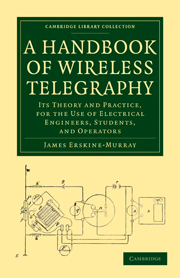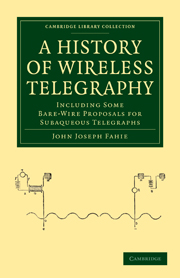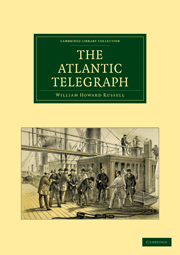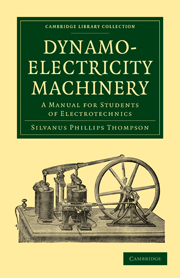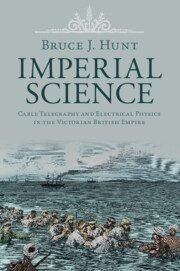A Handbook of Wireless Telegraphy
James Erskine-Murray (1868–1927) was a Scots expert in wireless technology who studied under Lord Kelvin for six years at Glasgow University before arriving at Trinity College, Cambridge as a research student. He eventually became a telegraphy consultant and published this work in 1907. Its aim was to inform engineers, students, and radio operators about many aspects of a rapidly changing technology. The book covers recent developments of the time, and a whole chapter is dedicated to the issue of transmission. Erskine-Murray also provided a chapter of tables containing data which he calculated himself and which had not appeared in print before. The work stands as a classic in the field of early engineering texts, and offers contemporary students and radio enthusiasts a useful guide to early wireless technology.
Product details
No date availablePaperback
9781108026888
346 pages
216 × 140 × 20 mm
0.44kg
132 b/w illus.
Table of Contents
- Preface
- 1. Adaptations of the electric current to telegraphy
- 2. Earlier attempts at wireless telegraphy
- 3. Apparatus used in the production of high frequency currents
- 4. Detection of short-lived currents of high frequency by means of imperfect electrical contacts
- 5. Detection of oscillatory currents of high frequency by their effects on magnetised iron
- 6. Thermometric detectors of oscillatory currents of high frequency
- 7. Electrolytic detectors
- 8. The Marconi system
- 9. The Lodge-Muirhead system
- 10. The Fessenden system
- 11. The Hozier-Brown system
- 12. Wireless telegraphy in Alaska
- 13. The De Forest system – the Poulsen system
- 14. The Telefunken system
- 15. Directed systems
- 16. Some points in the theory of jigs and jiggers
- 17. On theories of transmission
- 18. World-wave telegraphy
- 19. Adjustment, electrical measurements, and fault testing
- 20. On the calculation of a syntonic wireless telegraph station
- 21. Tables and notes
- Index.

